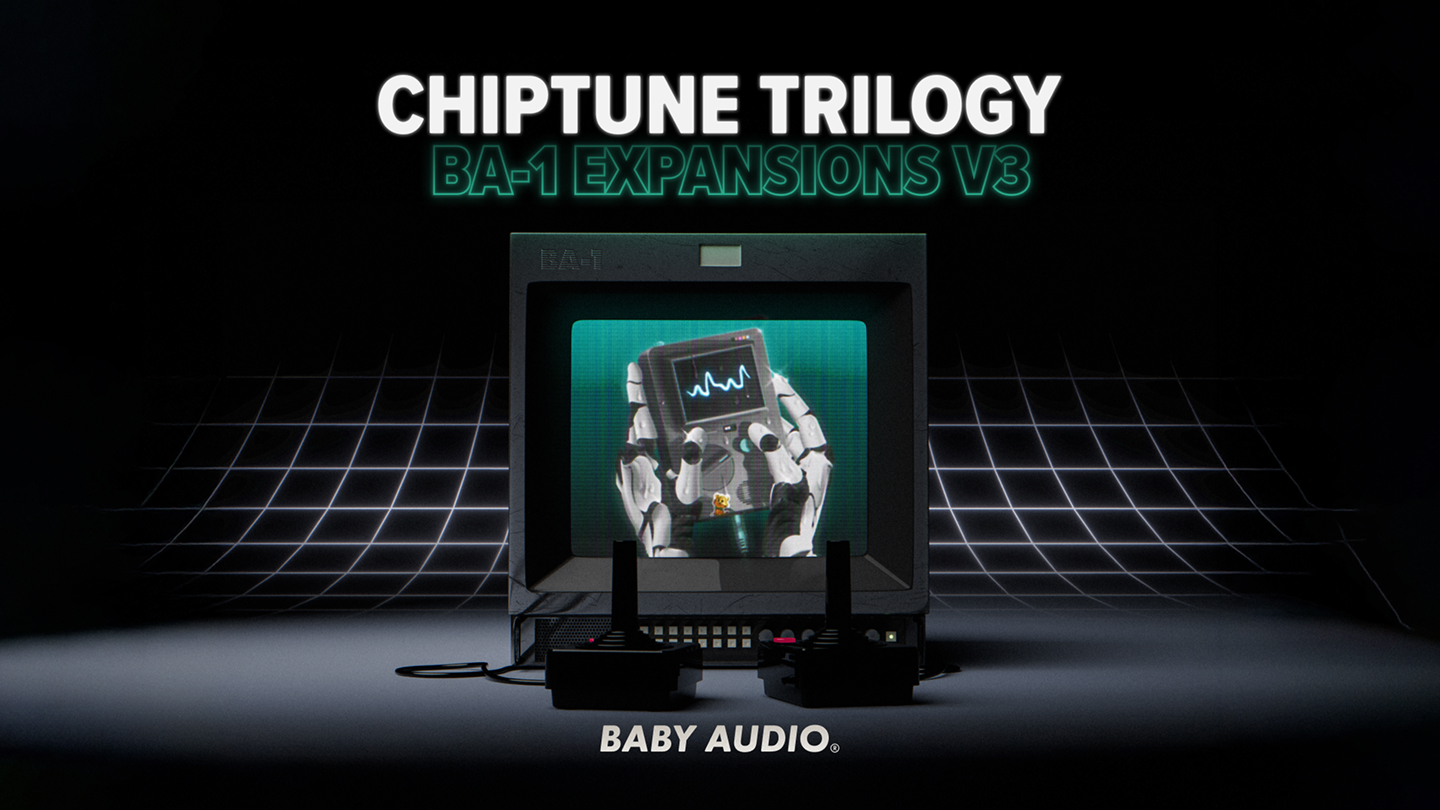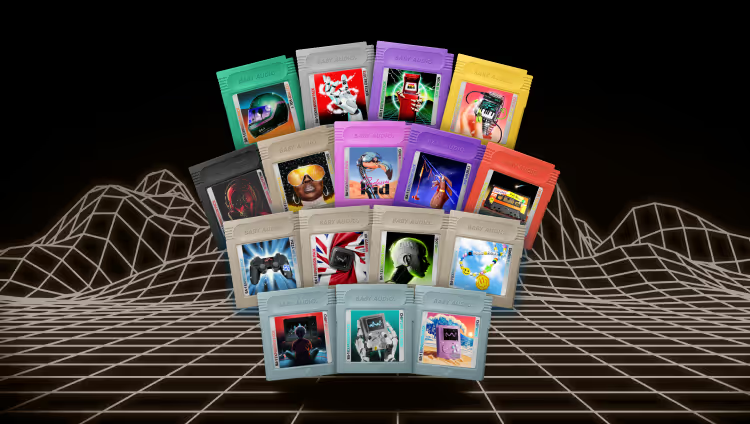What is Chiptune? How to Produce Retro Game Soundtrack Music

Chiptune music draws inspiration from the first golden age of video games.
The genre is a love letter to the music and soundtracks of classic arcade games and 8-bit consoles.
But chiptune is more than just nostalgia for a bygone era. It’s an active genre of electronic music with a passionate fanbase in 2025.
So what exactly is chiptune music and how can you learn to produce it like a pro?
In this article I’ll lay out the producer’s guide to chiptune, break down the genre’s essential characteristics and suggest the best tools and techniques to create it.
Ready player one? Let’s get started.
What is chiptune music?
Chiptune is an electronic music genre that celebrates the sound, composition style and aesthetics of retro video game music.
The term refers to the chip-based sound hardware found in arcade games, computers and consoles from the 1980s.
Known as PSGs, Programmable Sound Generator chips acted as rudimentary synthesizers that could output basic waveforms and sound effects.
Despite their limited capabilities, early game composers used their unique properties to create music that inspired a generation of young gamers.
The soundtracks of games like Tetris, F-Zero and Final Fantasy came to signify the period’s creativity and the birth of the modern gaming fandom.
Today, chiptune music is a worldwide cultural phenomenon that combines nostalgia for the early gaming era with modern electronic music and production.
Chiptune basics
Chiptune music is instantly recognizable to anyone familiar with retro game soundtracks.
But if you’re new to genre, here are the common features you’ll hear in most chiptune tracks:
8-bit sound palette
The simple yet expressive quality of 8-bit sound chips is the basis of the chiptune sound.
The main melodic, harmonic and bassline elements in a chiptune track are usually composed of simple saw or pulse waves like those generated by a console PSG.
Due to the limited processing power of the time, these raw waves were rarely filtered or modulated. The result is a straightforward but endearing character with the unique quirks of early digital hardware.
FM synthesis became possible with later systems like the Sega Genesis, and the expanded sonic capabilities are common in modern chiptune in addition to the basic PSG sounds.
On top of that, early game consoles also included basic PCM samples for elements like percussion which can be heard across original soundtracks and modern chiptune songs.
Unique compositional style
Chiptune music is typically upbeat and energetic with catchy melodies and memorable chord progressions.
Since PSG hardware had limited polyphony, it was common for original chiptunes to highlight a single melodic line for the main melody.
Original chiptune composers used tricks like rapid-fire arpeggiation to create the illusion of larger harmonic structures.
In combination with fast harmonic rhythm and active basslines, early game composers could make just three channels of audio feel immersive, engaging and complete.
The structure of chiptune tracks often includes looping sections that build in intensity like a player progressing through game levels.
Just like the retro game tracks they emulate, chiptunes also feature rudimentary PSG-style sound effects woven into the music itself.
As video games were gaining popularity around the world during this period, competing studios emerged in both Japan and the United States.
As a result, the influence of contemporary Japanese pop can be heard all over classic game soundtracks, reflecting trends such as the City Pop movement of the 70s and 80s.
Finally, the influence of today’ pop and electronic genres can be felt in modern chiptune as artists integrate recent trends into the chiptune style.
Retro gaming aesthetics
Chiptune music leans heavily on the aesthetic sense of retro gaming culture in addition to sound and composition style.
Chiptune artists often choose names associated with gaming terminology, and 8-bit graphics and visuals are common in chiptune album art and music videos.
How to get an authentic chiptune sound
With the basics out of the way, you’re probably wondering how to get vintage video game sounds to work with in your DAW.
There are a few different approaches, depending on how closely you want to mimic early game soundtracks.
For example, If you’re a purist looking for the exact sound of the original games, there are VSTs out there that emulate the sound hardware of specific systems like the NES or Sega Genesis.
If you go this route, you can also experiment with the production tools that some of the era’s game composers would have used.
DAW software didn’t exist when the first game consoles were created, so early game music was usually coded directly into the program during development.
While there’s no way to emulate this approach exactly, it’s possible to approximate later methods with programs known as trackers.
The term tracker dates back to the Ultimate Soundtracker program released for the Amiga computer in 1987.
Its unique style of sequencing caught on with early computer musicians and the format became popular for chiptune composition as technology developed into the 1990s.
But there’s no rule saying you have to use vintage-accurate PSG emulators or complicated trackers to make chiptune music.
We created the Chiptune Trilogy expansion for our BA-1 synth to give producers flexible modern tools that capture the authentic sound of the genre.
If you’re looking for a flexible softsynth with ready-to-use chiptune sounds, BA-1 and the Chiptune Trilogy will get you started right away.
How to produce chiptune
If you’re working in a regular DAW, producing Chiptune tracks is much like producing any other style of related electronic music.
Each producer has their own workflow and there’s no set method that will work for everyone to produce chiptune music.
That said, here are some general tips to help you get started
1. Start with a chord progression or a melodic hook
The best chiptune tracks recall the catchy earworm melodies and driving chord progressions of early game soundtracks
Take a basic saw or square wave preset like SYN Pulse from Professor Sakamoto’s Chiptune Legacy pack, and experiment until you find a nice hook or chord change.
If you need inspiration, listen to some chiptune compilations or original game music to get a sense of the vibe.
Plenty of common chord progressions are found in chiptune tracks, so you won’t need to learn any advanced music theory to get started.
Check out this video for an overview of common video game chord progressions.
2. Add an active melodic bassline
Basslines in chiptune music often act like an additional melodic voice that contrasts the main melody and adds rhythmic interest in the arrangement.
That might sound complicated, but all it means is a good chiptune bassline should feel active and propulsive as it supports the melody.
Pick a great bass sound like Monty’s Bass from Chiptune Futurism by LukHash and try to fill the space between chord changes with melodic lines, octave skips and stylish fills.
It might take some practice to come up with good ideas for busier bass lines, but it’s a fun way to compose once you have the hang of it.
3. Bring in sound effects, arpeggios, and percussion
Chiptune songs should feel like they could be the soundtrack to a real game from the classic era.
That means special effects and other soundtrack-style flourishes are essential for a convincing atmosphere.
As I mentioned above, the rapid arpeggio trick that was common in the 8-bit era is a great way to bring in some of that authentic flavor.
Thanks to BA-1’s onboard arpeggiator, the Chiptune Trilogy Expansion comes with plenty of readymade presets that use this technique.
Each pack in the BA-1 Chiptune Trilogy Expansion collection features a good selection SFX sounds and arps that work perfectly for retro game effects.
4. Get creative with your mix
While chiptune music relies on a palette of straightforward sounds, there’s no reason you can’t experiment when it comes to the mix.
A little extra 1980s flair can help elevate the feel of the track if you’re willing to go beyond the raw sound of the PSG chip.
Here at Baby Audio we love the sound of 80s production, with tools like Super VHS made capture the unique lo-fi flavor of retro videocassettes, TAIP for introducing analog saturation and Crystalline and Comeback Kid for vintage-style delay and reverb.
Our plugins are a great place to start if you’re looking for more tools to add convincing retro style and sound to chiptune tracks.
Chiptune forever
Chiptune music began during a brief phase in video game history, but it never stopped innovating with the raw materials that inspired it.
The genre’s popularity today points to the enduring charm and creativity that kicked off gaming culture as we know it today.
If you’re a fan of classic games and the music they contain, creating chiptune music is a great way to pay homage to the era.
If you’ve made it through this article, you’ll have a great start for creating your own chiptune tracks.
Artist-approved presets for BA-1
BA-1 is an analog chameleon capabale of capturing many of the most iconic synth tones from across music history. Explore the expanding library of custom presets created by some of the best artists and sound designers in the game. From chiptune to lo-fi to cyberpunk, these genre-themed expansion packs make BA-1 your go-to synth for authentic vintage tone.




.png)




